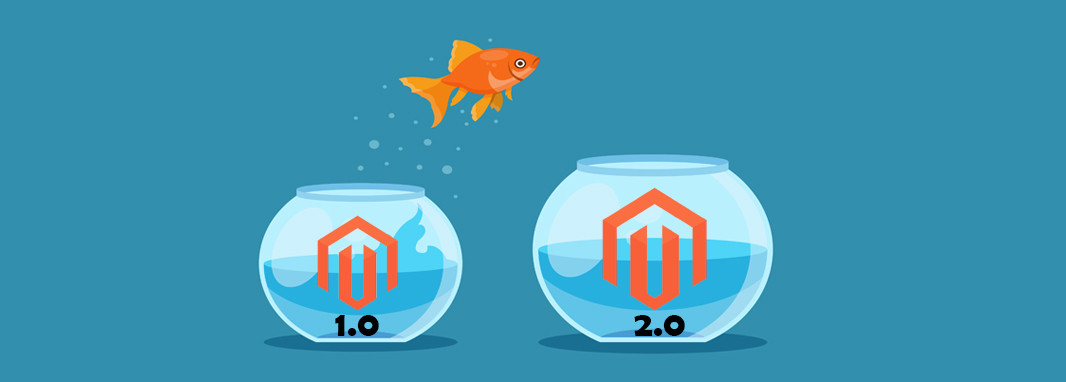Although many businesses are still using Magento 1, its days are numbered. There is less and less room for your business to make a maneuver and shift to a newer version. The time for Magento 2 migration has come.
Recently, Magento announced that the original platform is reaching the end of life - its software support is working through June 2020 only. Since there won't be any more official patches or security updates, Magento commerce urges its users to start a Magento 2 migration as soon as possible.
Of course, Magento upgrade holds a certain degree of complexity - it is a hugely innovative and smart platform, not a light application. This is an ecommerce phenomenon, born to support online merchants in launching their e-commerce. Magento a brilliant option for small and large businesses alike. Yet, building an online business takes more than choosing a platform and brand name. It should be treated carefully. In this regard, we recommend to go through a smart checklist on how to start an ecommerce business not to miss an important step.
According to the latest estimates, Magento commerce will continue to see growth over the coming years. The number of online shoppers served by Magento websites could grow by 200% this year alone. Besides, due to the COVID-19 lockdown measures imposed in countries around the world, Magento is expected to see even greater rates. Only time will reveal the true scope of its growth, however.
Do you need to build an ecommerce store, update or make a new extension? We can help!
Currently, Magento is one of the most popular CMS for online shops worldwide. Top names that don't need introduction are Magento customers: Ford, Coca-Cola, Omega Watches, Christian Louboutin, Jaguar, and Bulgari. On average, retailers that use Magento grow three times faster. Here are the latest stat samples about Magento's use in the world - as of April 2020, Magento owns a 1.4% market share of all websites that use CMS. It's employed for as much as 12% of all online retail stores.
Version 2 offers benefits that could make a significant difference in the long run. This is the reason that some of the leading eCommerce businesses such as Tile Giant, Helly Hansen, Pino's, Land Rover, and many others have already upgraded to Magento 2 because they understood that a simple upgrade could change their fate.
Now those businesses enjoy Magento 2 advanced features. M2 is more secure, fast, optimized, and clean. They got better UI, sleek dashboard, fast-loading, and overall modernized platform. Still, it's estimated that about 240 000 business websites have not yet fulfilled the switch-over. And even though Magento 2 is vastly superior to its predecessor, the process of Magento migration is tricky and can lead to hair-pulling frustration.
You must have also faced the question: "Do I need to shift to Magento 2?". Well, Magento is not forcing anyone to upgrade, but the short answer is yes - Magento 1 to Magento 2 migration is a prerequisite for growth. And the need to switch is increasingly urgent.
Run the unsupported business?

No one likes to be left behind. But those who don't migrate their ecommerce software risk of hitting upon an unsupported software after M1 sunset. What kind of threats and inconveniences will a business experience When Magento turns off CMS support?
CMS without support is prone to vulnerabilities. The number of web skimming attacks is increasing. So the ecommerce stores that will opt against Magento migration will face the risk of getting hacked and contaminated with code that steals customers' payment details or exposes their personal data.
In the best case outline, your ecommerce store will simply become slower; in the worst, your website will stop running altogether. The chances are that your ecommerce business may get extinct. That said, Magento 1 to Magento 2 migration proves to be inevitable.
Magento 2 transition. Why?
Many users were complaining that their ecommerce sites are running slow, leading to loss of customers.
Admittedly, the new Magento 2 platform does it better - it runs, on average, 20% faster. Besides, M2 has many beneficial features that resolve all of the issues encountered in Magento 1. Some of these benefits are:
Improved performance
If you decide to let your Magento migrate, your ecommerce store performance will significantly improve.
Thanks to a robust architecture based on the newest technology stack, as well as better browser caching and JavaScript compression, Magento 2 provides excellent performance outcomes. The new version offers faster page load speed when compared to Magento 1. Enhanced proficiency of backend operations and database flexibility and scalability ensure peak loads are smooth as silk. Magento 2 takes advantage of updated tools, languages, and technologies, including PHP 7, MySQL clustering, PHPUnit, full-page caching, and more. From a technical viewpoint, employing the newest technologies is the best way to future-proof your online store.
The checkout process is also much more straightforward. Magento 2 vs. Magento 1 - means 39% more orders per hour and 51% faster end-to-end checkout time. Magento 1’s checkout process consisted of 6 steps; meanwhile, Magento 2 has only 2 of them. Customers love it!
Reinforced security
All ecommerce websites have to battle online risks. Cyberattacks resume about 50 to 60 every day. Magento 1 to Magento 2 migration enables reliable protection. How?
First off, an open Source Platform with no support makes the website vulnerable because there will be no updates, security patches, or bugs resolving for Magento anymore. In Magento 2, protection of user data and the security of the order process are the highest priority.
Magento 2 password management system helps to improve password security by using SHA-256 hashing algorithms. The newly-introduced 2FA feature grants an additional layer of protection. An open source password manager can provide further security enhancements, offering robust encryption and simplified management of multiple passwords, ensuring safe access to your Magento platform.
Backup enhancement includes hourly offsite backups and downloadable backups. A backup plan guarantees that your ecommerce shop doesn't get any intrusion in the service if it gets hacked or falls. Files can be downloaded with an FTP client.
A unique admin URL is also a solid protection layer. Cybercriminals won't be able to approach them. Cross-Site Scripting attacks, SQL injection and exploits prevention are also improved.
Streamlined checkout process
Forget about Magento 1's slow and clunky checkout. It has been totally reworked in the new version - both in terms of customer experience and technical point. Magento 2 migration opens a safe and simple checkout and reduces friction. The new checkout takes less time, giving the customer much more information about their order.
With the shift, customers won't be forced to create an account anymore - only provide the details needed to make your purchase. Magento 2 recognizes visitors as guests. No need to log in or fill in a registration form to continue the checkout process. When a customer first enters the checkout, the ecommerce platform now understands a visitor is a guest, so they won't be presented with a login or registration form before entering the checkout. Instead, shoppers see a simple form asking for their email address and shipping details. If the consumer wants to create an account, they can do it the end of the process.
Another feature has to do with the shipping rates. Once a customer enters their shipping address (country, region, or postcode), the shipping rates get re-calculated and displayed. The rates are up to a business. It can be free shipping over a specific value or some special rates for certain products, or a fixed price.
Finally, Magento 2 is designed to support custom payment methods integration into checkout. It also lets vendors create their own payment modules.
Customized navigation
Well-designed, user-friendly navigation is one of the essential aspects directly affecting customer shopping experience. Magento 1 to Magento 2 migration will allow making this experience unique.
Magento 2 ensures the limitless potential for customization and integration. Using layered navigation, you can create catalogs and product filters the way you want. You can also fine-tune the grid display according to your needs. With advanced filter options, you can sort products by category and create custom grid view templates to ensure timely access to any product information a customer needs. The default Magento 2 product grid may be expanded and modified. Thus, customers can find products in a matter of seconds.
Mobile-friendly
While more than half of all customers make purchases via a smartphone, mobile performance remains to be a weak point of the Magento 1 platform. The new version recognized this trend and amplified mobile responsiveness. Hence, Magento 2 migration will take the mobile experience of your customer to the next level.
Its admin panel is touchscreen-friendly and makes it easy to deal with ecommerce stores via phones or tablets. It makes your website engaging, easy to use, and easy to navigate irrespective of the device in use and its resolutions.
Besides, responsive themes can be developed for Magento 2 much easier than for Magento 1; their number becomes higher than the previous version. So, you can pick more suitable themes for your business topic, and the mobile browser can still work well with your Magento 2 eCommerce website.
Advanced reporting
Every drop of conversion is goodness, and Magento 1 to Magento 2 Migration is of help here as well.
Its innovative reporting module helps ecommerce stores track, process, and manage their business better. Magento Admin offers 20 reports through its web interface. This feature gives you insight into some critical areas.
It informs about the number of orders, AOV, and taxes and shipping fees collected. Magento 2 reports on the number of customers, their registered accounts. And finally, the reporting feature analyses the number of product orders and comes up with a recommendation on which product sells best.
The reporting is dynamic and real-time, offering you the system of indicators that you need for better management of your ecommerce business.
Better SEO
SEO is another ecommerce booster as almost half of the customers start their journey with a Google search. Bearing this in mind, Magento 2 offers several improvements, such as meta tags functions for the individual pages (which were missing in the Magento 1), and canonical tags help to avoid duplicate content issues.
Apart from that, Magento 2 added an outstanding feature - Rich Snippets. This function allows online merchants to present the defined markup data from their product pages along with Google results; as a result, promoting their CTA and SEO work - there is no need to work on it additionally!
OK! How do I get there?

Either you decided to re-platform your business with Magento 2 or to move your Magento 1 to a new version, it requires a considered approach. For a smooth transition, you will need to make sure you have a backup of all data before you attempt to shift to M2. There may be issues, and it is vital to have an alternate plan just in case.
Also, consider testing the migration process on a sandbox first. Make a copy of your website, preferably on a different server, and practice your update steps there.
To facilitate the Magento 2 migration process, there is an officially released Magento 2 Data Migration Tool that helps developers migrate their store data and settings using commands.
Magento 1 to Magento 2 migration can be a challenging initiative to tackle. If not handled properly, it may ruin the store functionality. To avoid it, a great idea is to hire professional Magento migration services. From core and database migration to functionality augmentation and user interface refinement, Zfort Group, a reputable Magento development company, offers a stress-free Magento 1 to Magento 2 Migration. We can also undertake a Magento 2 migration project rescue at any stage if something went wrong.
Do you need to build an ecommerce store, update or make a new extension? We can help!






